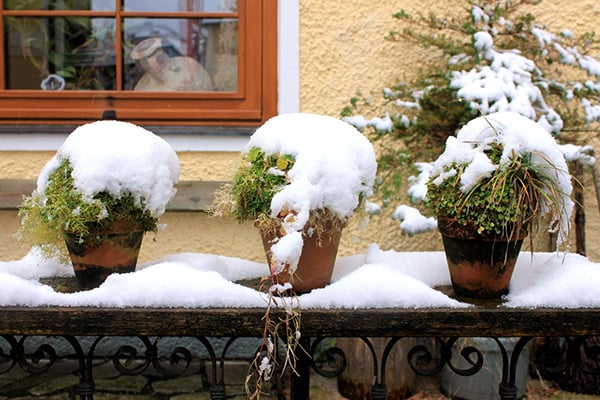As the temperatures drop and the days grow short, you should be thinking about how to winterize your plants. What's the best way to protect your greenery from colder weather?
Many of your established plants don't need much special attention to survive the winter. However, for tender plants and new additions to your garden or landscaping, learning how to protect plants in the winter is essential.
You can ensure the survival of even your hardiest plants for many seasons to come by taking a few preventative measures.
1. Know your temperature zone
Knowing your area’s average annual temperature extremes is essential to successful winterizing. This information is readily available from the U.S. Department of Agriculture’s website — just look for your state and county.
2. Apply mulch
The best way to begin the winterizing process is by mulching. Mulch insulates the soil and prevents frost heave, a condition that occurs when soil repeatedly freezes and thaws. Plant heave exposes plant crowns and roots to freezing air and drying winds.
When applying mulch, aim for a layer that’s three to five inches deep, or even deeper for colder regions. Use material that won’t compact. Good candidates are bark, leaf litter, clean hay, straw, or even recycled rubber.
Also, while mulching, trim your perennials back and pull up the annuals to eliminate hiding places for pests and plant diseases.
3. Get rid of the intruders
Remove any weeds and place them in a sealed container for disposal, not in your compost pile. Weeds compete with desirable plants for precious natural resources and are often more difficult to eradicate once they re-establish themselves in the spring. Weeds are also often a sign of underlying issues with your soil. For example, soil needs air if it is to remain healthy. Soils compacted by weeds and their roots can become choked.
4. Protect the potted plants
Before the first freeze, bring in any potted tropical and semi-tropical plants you’ve enjoyed outside during the spring and summer. Before doing so, however, it’s a good idea to apply a horticultural oil or insecticidal soap to remove pests and their eggs from the plants. Once indoors, give your plants as much light as you can, but be careful not to overwater. Plants grow slower during winter and consequently don't require as much water. If a few leaves turn yellow and drop, don't panic. The dimmer indoor light means the plants don’t need as many leaves as they would if they were outdoors.




